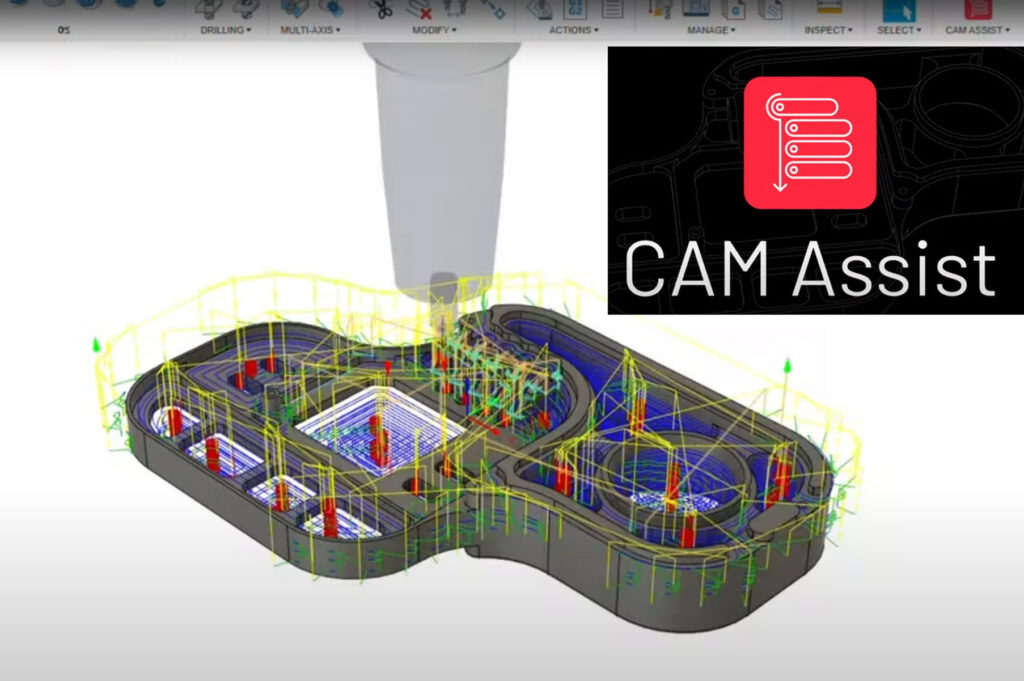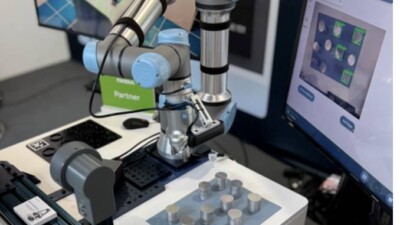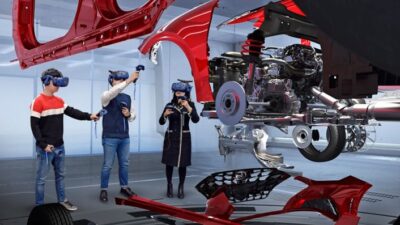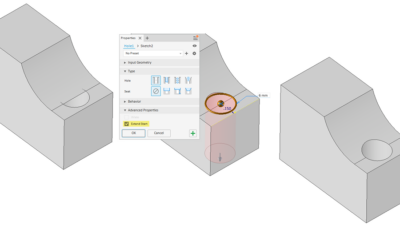Our conversation with Stephen Hooper continues.
This article is part two of a conversation with Stephen Hooper, VP of software development for Autodesk’s Design and Manufacturing division. Part 1 is here.
Engineering.com: We discussed how Fusion will help on the design side by automatically generating dimensions. How big of an assist will this be?
Stephen Hooper: On average, engineers can spend a couple of days a week doing technical documentation. It’s a huge savings if we can automate even 50% of that. There’s a huge skills gap in the world of engineering. Any time we can free up a skilled engineer to focus their attention on design, creativity, innovation and engineering work versus technical documentation is a huge benefit for end users. This is what would fall into the category of automation for us. There are several automation projects we’re in the middle of.
Engineering.com: What about the use of AI for manufacturing?

Hooper: We talked about CloudNC at Autodesk University. There’s one example on the manufacturing side that is advanced now. It’ll create soft jaws for tooling. It’ll then create all the machining strategies based on machine tool. So rather than a production engineer wasting time producing pretty generic machining strategies, this add-in will examine the topology and then build specific machining strategies without the user being involved. One thing I would say here, and it’s true for all of the AI applications, is we focus on generating native content. We do this because we don’t believe in cutting the user out of the process. We should do 60 to 70% of the work for the user but still leave the user in complete control of how to edit the output. In this case, you’ll see that it produces standard Fusion machining strategies. It also looks at the cutting parameters. If it’s aluminum and you’re cutting it with a 40 mil end mill with three teeth, one can have it analyze the cutting parameters, speed, feed, and depth of cut. Then, it can investigate where the tool is likely to break, which is in red, and where the optimum cutting strategy is, the maximum speed and feed, and the depth of cut so that one get the best operational efficiency from hardware.

Engineering.com: Thanks for the examples for drafting and CAM. What about AI helping with design, though?
Hooper: On the creative side, this is what I call augmentation. We’re not going to generate designs for people who don’t have a designer involved. It can become an assistant. As with software development. Microsoft has introduced what they call Copilot. The idea of Copilot is it doesn’t generate code and removes the necessity of an engineer. It sits with the engineer and helps them get rid of some of the laborious work they are doing. One of the things engineers hate doing is commenting code. They’re trying to solve a problem. Commenting code is super important for documentation and revision later on, especially in large teams. Copilot will automate the process of commenting in code. It’s an important function, but one that can be automated and it allows the engineer to focus on the creative side of problem solving.

Engineering.com: Autodesk acquired BlankAI. How will BlankAI’s technology be implemented?
Hooper: BlankAI will come in on the industrial design side. BlankAI takes all historical industrial designs and trains the model on those industrial designs. Then, when you start producing the next industrial design, blank AI will assist by helping incorporate company design language. Suppose you’re at BMW and want to produce a new vehicle architecture and are looking for a new industrial design. In that case, there are aspects of design language to incorporate and ensure that they remain consistent across all portfolios, such as edge design, the kidney grills, and the different aspects of BMW’s aesthetics that carry the brand identity.
In that respect, we’re not trying to replace the designer or generate the surface model for a vehicle. We’re trying to augment the design after they make choices, such as the vehicle’s width. Say you’re working on a coupe and want to incorporate some historical brand identity. The AI will interactively work with the designer. It lets one set up sliders. Say you’re working on the i4 and want to influence the body design of the i4 with the BMW 3 Series, which is what they did. The i4 has the same architecture as the 3 Series and carries many of the same styling cues. You could start with a foundation or surface model at the simplistic stage and then use BlankAI to introduce aspects of the 3 Series design cues into that initial early-stage conceptual design. That is when we start to get into customer-specific IP. BlankAI would be under that model and train it specifically on their data for their use. This is an area that we’re still exploring.
Engineering.com: That is a very specific example. How can AI-assisted design be rolled out to the whole design community?
Hooper: We have yet to figure out how to provide that en masse. It may be that we look at something such as ChatGPT. Everyone uses base-level of ChatGPT, but Autodesk has licensed advanced technology from OpenAI. We have a vertical version. It takes the base ChatGPT and trains it with a differential we call AutodeskGPT. We use it internally with developers and support staff. It takes the base of ChatGPT and trains it with extra data around Autodesk products and methodologies. It’s only available to us because it has the IP. That’s one idea we’re exploring.
Again, it will come down to whether you’re providing horizontal functionality, such as spellcheck, grammar, and dimensioning in a drawing versus vertical capabilities specific to the organization. As a customer, that represents IP. Other vendors are doing the same sort of thing. Adobe is working in that area. They’re injecting AI tools into traditional workflows and combining them. Have you ever used the Photoshop implementation and interacted with the visualization? One can use standard selection set modifiers in combination with generative AI. That is a powerful approach. They still leave the user in control.
To be continued …



